Sultan pleco - Leporacanthicus joselimai
Scientific name: Leporacanthicus joselimai
Common name: Sultan pleco
Family: Loricariidae
Usual size in fish tanks: 10 - 15 cm (3.94 - 5.91 inch)
014
Recommended pH range: 6.2 - 7.4
Recommended water hardness: 4 - 17°N (71.43 - 303.57ppm)
0°C 32°F30°C 86°F
Recommended temperature range: 24 - 27 °C (75.2 - 80.6°F)
The way how these fish reproduce: Spawning
Where the species comes from: South America
Temperament to its own species: peaceful
Temperament toward other fish species: peaceful
Usual place in the tank: Bottom levels
Origin
The Sultan Pleco (Leporacanthicus joselimai) is native to South America, specifically the waterways of Brazil. These fish are commonly found in the fast-flowing rivers and streams of the Amazon Basin, where the water is well-oxygenated and acidic to neutral. Their natural habitat is characterized by rocky substrates, submerged driftwood, and abundant hiding spots, which mimic the environments they thrive in.
Lifespan
With proper care, the Sultan Pleco can live for 5-8 years in captivity. Stable water conditions, a nutritious diet, and minimal stress are essential to maximizing their lifespan.
Short Description
Sometimes referred to as vampire plecos due to their two fang-like teeth used for grasping prey, the Sultan Pleco is a visually striking member of the Loricariidae family. Known for their dark bodies adorned with white or pale spots, they are among the most attractive plecos. These fish prefer high water quality and slightly acidic to neutral water conditions. They are more active in small groups, but the tank must be large enough for each fish to establish its own territory.
To replicate their natural environment, provide bogwood and rocks to create hiding spots and reduce stress. Dim lighting is preferred, as bright lighting can cause them to become reclusive. Adding powerheads to the aquarium is recommended to mimic the fast-flowing waters of their natural habitat and to ensure proper oxygenation. Suitable tank mates include South American cichlids or other species that thrive in similar water conditions, as Sultan Plecos can be territorial, especially as they mature. They are best housed with tank mates that occupy higher water levels to avoid territorial disputes.
Food and Feeding
The Sultan Pleco is an omnivore with varying dietary needs throughout its life stages. As juveniles, they are more herbivorous, favoring algae and plant matter, while adults require a higher intake of protein. Offer a quality flake or pellet food as their staple diet, supplemented with algae wafers. Twice a week, provide treats of live or frozen foods like krill, bloodworms, or brine shrimp. These protein-rich treats are particularly beneficial for mature fish. Feeding in the evening or after lights are dimmed is recommended, as they are naturally nocturnal.
Sexing
Sexing mature Sultan Plecos can be done by observing physical traits. Males typically have a broader and longer head shape, more vivid coloration, and a larger dorsal fin than females. These differences become more pronounced during the breeding season.
Breeding
While breeding Leporacanthicus joselimai in captivity has not been documented, their natural breeding habits provide valuable insights. In the wild, they are cave spawners, using caves in riverbanks as nesting sites. After the female lays eggs, the male assumes sole responsibility for guarding the eggs and caring for the fry. To encourage potential breeding in an aquarium, provide a variety of cave-like structures using rocks or PVC pipes. Maintaining high water quality, stable parameters, and mimicking natural flow conditions may increase the likelihood of breeding behavior.
Pictures
Bought by aqua-fish.net from jjphoto.dk.






 Adonis
Adonis  Lyre
Lyre  Bristlenose
Bristlenose  Gold
Gold  Bushymouth
Bushymouth  Spotted
Spotted 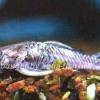 Medusa
Medusa  Bristlenose
Bristlenose 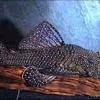 Starlight
Starlight  Spotted
Spotted  Catfish
Catfish  Bushynose
Bushynose  Bristlenose
Bristlenose 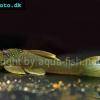 Green
Green  LDA-33
LDA-33  Snowflake
Snowflake  Gold
Gold  Gold
Gold  Bulldog
Bulldog  Dasyloricaria
Dasyloricaria  Butterfly
Butterfly  Whiptail
Whiptail  Amazon
Amazon  Twig
Twig  Spotted
Spotted  Spotted
Spotted  Lemon
Lemon  Pleco
Pleco  Peruvian
Peruvian  Zebra
Zebra  Pleco
Pleco  Hypostomus
Hypostomus  Pleco
Pleco  Suckermouth
Suckermouth  Spotted
Spotted  Woodeating
Woodeating  Golden
Golden  Multiradiatus
Multiradiatus  Marbled
Marbled  Pleco
Pleco  Dwarf
Dwarf 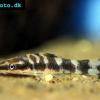 Dwarf
Dwarf  Dwarf
Dwarf 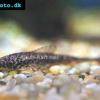 Oxyropsis
Oxyropsis  Orange
Orange  Blue
Blue  Clown
Clown  Royal
Royal  Blue
Blue  Rubber
Rubber  Goby
Goby  Wormline
Wormline  Para
Para  Tiger
Tiger 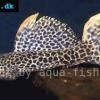 Leopard
Leopard  Spiny
Spiny 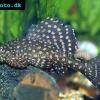 Marbled
Marbled 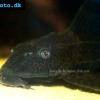 Amazon
Amazon 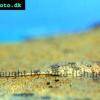 Common
Common  Sunshine
Sunshine  Golden
Golden